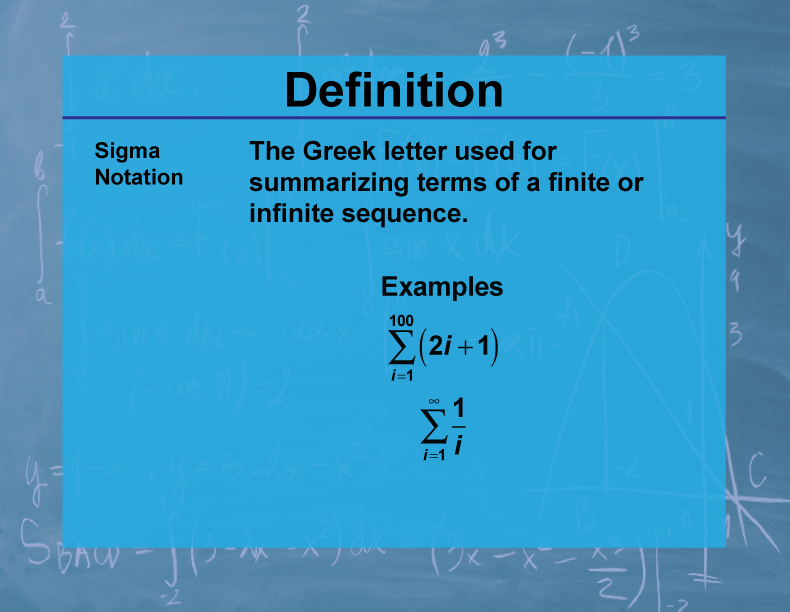
Display Title
Definition--Calculus Topics--Sigma Notation
Display Title
Definition--Calculus Topics--Sigma Notation

Topic
Calculus
Definition
Sigma notation, denoted by the Greek letter Σ, is a compact way to represent the sum of a sequence of terms. It is written as Σ[i=m to n] ai, which means the sum of ai for i ranging from m to n.
Description
Sigma notation is a powerful tool in calculus and mathematics in general, allowing for concise representation of sums of large numbers of terms. It's particularly useful in expressing series, defining integrals as limits of sums, and in many computational algorithms. In calculus, sigma notation is crucial for understanding Riemann sums, which form the basis for definite integrals.
In mathematics education, learning sigma notation helps students transition from arithmetic to more abstract mathematical thinking. It introduces the concept of indexing and provides a foundation for understanding series and sequences. Sigma notation also prepares students for more advanced topics in calculus, such as Taylor series and numerical methods for integration.
Teacher's Script: "Imagine you're calculating the total cost of your groceries. Instead of writing 2.50 + 3.75 + 1.20 + ..., we can use sigma notation if the prices follow a pattern. For example, Σ[i=1 to 10] (0.5i + 1) could represent 10 items where the ith item costs 0.5i + 1 dollars. How would you expand and calculate this sum? Now, let's consider how we might use this to approximate the area under a curve, leading us to the concept of integration."
For a complete collection of terms related to Calculus click on this link: Calculus Vocabulary Collection.
| Common Core Standards | CCSS.MATH.CONTENT.HSF.IF.C.7, CCSS.MATH.CONTENT.HSF.BF.A.1.C |
|---|---|
| Grade Range | 11 - 12 |
| Curriculum Nodes |
Algebra • Advanced Topics in Algebra • Calculus Vocabulary |
| Copyright Year | 2023 |
| Keywords | calculus concepts, limits, derivatives, integrals, composite functions |